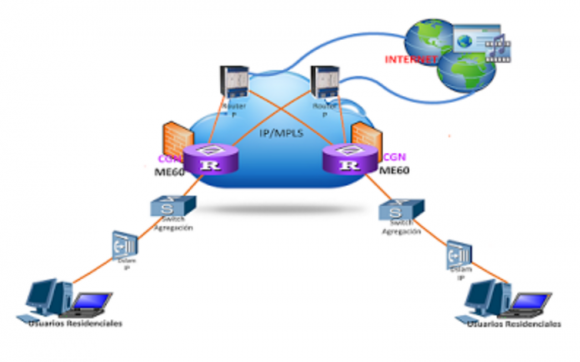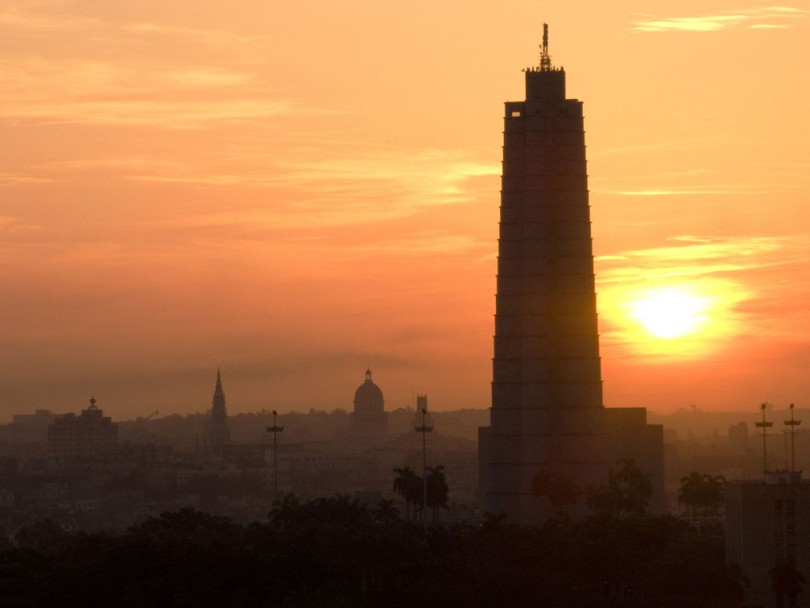aNewDomain — A landmark program for connecting home users in Old Havana with free Internet services is wrapping us this week.
 How did it go and what does it portend for the future of Internet access on the rest of the island? Cuba’s state-owned telecom provider, ETESCA, isn’t saying much.
How did it go and what does it portend for the future of Internet access on the rest of the island? Cuba’s state-owned telecom provider, ETESCA, isn’t saying much.
It has yet to even describe how many people and in how many homes signed up for the trial, or how many of those signed up for its follow-on paid Internet service.
But there are plenty of clues as to the future Cuban internet that we can look at, and lots of unnamed sources who have revealed intriguing details about the size and shape of the future network.
Here’s a look at what we know so far.
How big?
We do know that some 2,000 Old Havana homes were eligible for the trial. Of those, according to one source who spoke to me on condition of anonymity, fully 700 have signed the contracts necessary to start paying for regular service. That’s a big success rate, but remember that, until the trial, this wasn’t a connected island.
Well, that changes now.
But does Old Havana have the bandwidth to support these folks? Again, ETESCA’s not saying. Given what I already know about how net access is set up in the area, it seems a pretty good bet that all 2,000 trial homes were served by a single office that was upgraded to offer Digital Subscriber Line (DSL) connectivity.
How much?
What will ETESCA be charging the takers? That’s a question technologists and lots of business people eyeing the Cuban internet opportunity want answers for.
I don’t see home-connectivity prices on the ETECSA Web site yet, but a report from the site Cibercuba predicts the prices will look a lot like this:
15 cuc 30 horas, 256 KB/s
50 cuc 30 horas, 512KB/s
70 cuc 30 horas, 1MB/s
115 cuc 30 horas, 2MB/s
The single anonymous source I have gave me a set of similar prices:
15 cuc 30 horas, 256 KB/s
30 cuc 30 horas, 512KB/s
45 cuc 30 horas, 1KB/s
Of course, two unnamed sources aren’t what you want to build an informed story around, but these numbers seem about right, considering.
Because home users likely will be required to recharge at least once per month, those would be just minimum monthly charges.
Will unused hours accumulate as credits or will they be lost? That’s unclear.
But it’s a fair assumption that all the speeds quoted above apply to downloading data from the Internet. Upload speeds are likely way slower, which is what you’d expect if Old Havana’s central office is utilizing DSL links. DSL, you may remember from your experience with it a couple decades ago, is asymmetric.
Are those prices too high?
Regardless of what set of prices are closer to the final ones, this much is true about them: They’re high. They are high relative to Cuban incomes — and remember, any nascent service coming out of Old Havana is going to be slow by today’s standards.
That’s why I was surprised to hear sources suggest that 700 of the 2,000 eligible homes signed service contracts after the Old Havana trial.
Maybe some of those 700 customers may use the Internet for room rental or some other form of business to offset the cost. Old Havana, of course, has plenty of stores and businesses.
It’s unclear, because of the lack of specific information from ETESCA, whether the trial took place in an area of Old Havana that is more dense with commercial concerns.
Coming soon: Internet trials for Bayana and Santa Clara
As you’d expect, the Old Havana trial is just one of several localized trials ETESCA has in store for the nation.
According to sources who claim to be familiar with the efforts, I am hearing that the cities of Bayama and Santa Clara are next.
They may start, sources say, as early as this week. Whether these will also start with a two-month free trial, as Old Havana did, or with pay service offers from the start is unclear. Hazy, too, is how many central offices will be available to serve new online customers in those areas.
It’s likely service will start with densely populated areas, first. That’s simply the most cost-effective way to do it.
And for sure, those installations will be intriguing to watch.
Can Cuba link 50 percent of homes by 2020
Back in June 2015, I shared with you a version of a Cuban home-connectivity plan that insiders leaked out.
It promised to make home Internet connectivity available to 50 percent of Cuban homes by 2020.
If the acceptance rate of 700 out of 2,000 homes holds up — that’s the figure my source claimed regarding the Old Havana trial — that means that just 17.5 percent of Cuban homes would be online by the end of 2020.
Then again, there are countless factors that would throw that estimate off.
For one thing, there’s the feasibility and speed of DSL connections. That, you may remember from your own experience, is a function of the distance of the home from the central office serving it. It’s also a condition of the wiring between the home and the central office.
Demographics and incomes vary, too, especially from community to community.
I suspect that the infrastructure in the Little Havana trial area is better than average as are the incomes and degree of familiarity with the internet. Yet without more data, that’s a difficult suspicion to confirm.
Regardless, though, DSL speeds ranging from 512KB/s to 2 MB/s is extremely slow. And I don’t just mean by today’s standards in the U.S. I had 5MB/s DSL connectivity at my home in the 1990s.
But if Cuba internet speeds are slow now, just wait
I am sure I am not the only to publicly suggest that the best thing for Cuba to do is to make a plan to leapfrog today’s technology. As soon as it’s feasible, it should begin installing next generation technology.
This DSL rollout should be and likely is just a tiny first step, allowing the island to recapitulate Internet infrastructure evolution from dial-up to DSL. Cuba totally skipped the intermediary ISDN step, which makes sense and is what you’d expect.
And though I can only speculate on why ETESCA is taking the approach it is, it’s a good bet that Cuban officials are a bit afraid of the political implications of modern internet connectivity.
That fear, born in what I’ve called the Dictators’ Dilemma, isn’t new. When the internet was brand new in places like China — or, say, Russia — officials in those countries worried that their one-party governments might be incompatible with internet access. But that didn’t turn out to be the case, and certainly Cuba will learn from the paths they took.
Also, it isn’t 1995 all over again in Cuba. ETECSA officials of course understand that there are alternatives to DSL. Maybe they are starting there because a DSL rollout is asier to finance with foreign investments, or maybe not.
The role of ETECSA shareholders and their degree of control has been unclear from the beginning.
The end of the Old Havana trial and the availability of home connectivity in two more cities will generate a lot of publicity, for sure.
But if Cuba aspires to a ubiquitous, modern Internet — and it seems to — these will be incidental steps among a longer, more important journey.
The appendices include her questionnaire, responses and respondent’s age and sex.
For aNewDomain, I’m Larry Press.
An earlier version of this piece ran on our Larry Press’ blog, LaredCubana, late last week. Read it here. Ed.












